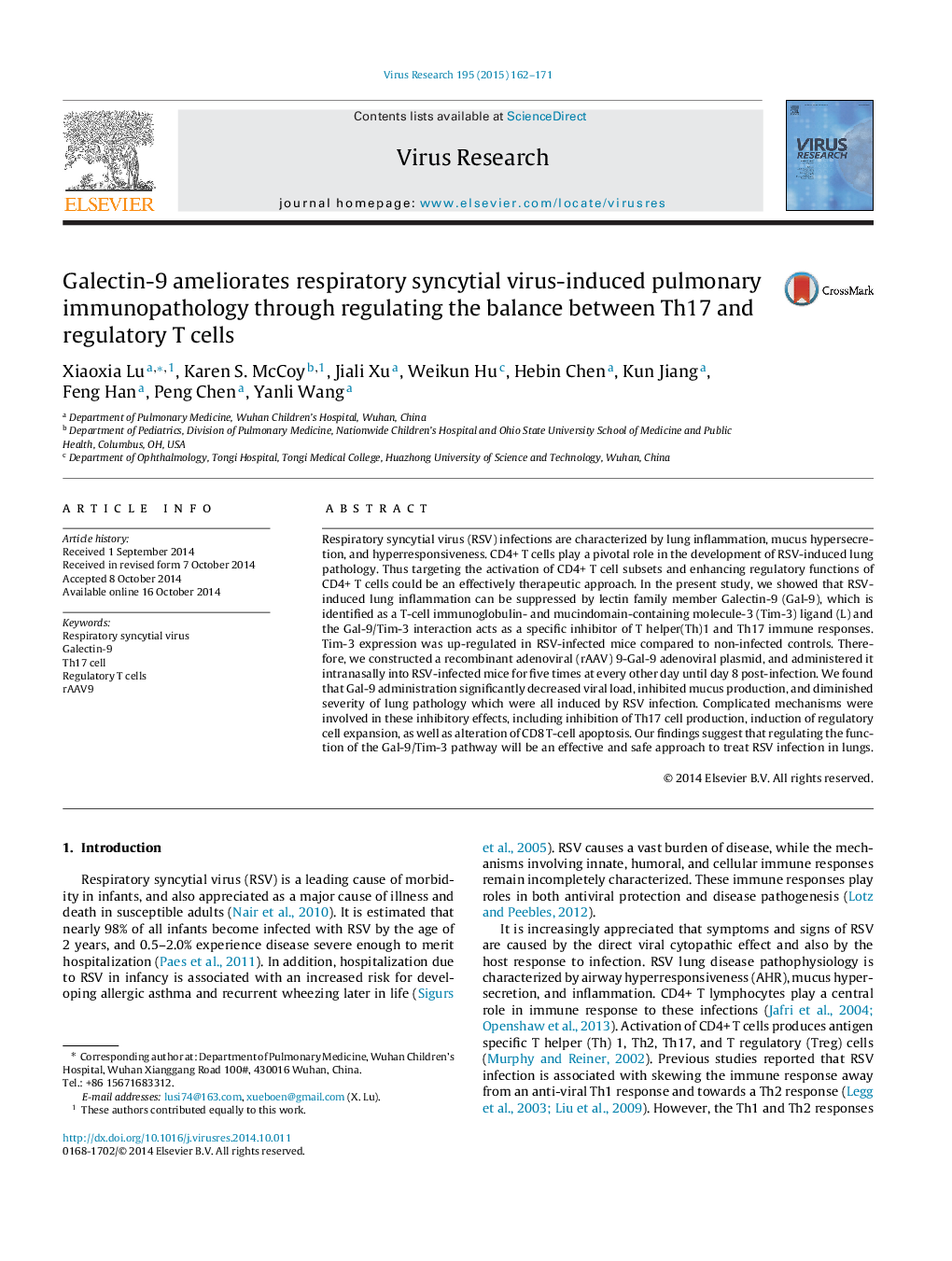| Article ID | Journal | Published Year | Pages | File Type |
|---|---|---|---|---|
| 3428360 | Virus Research | 2015 | 10 Pages |
•Tim-3 expression is up-regulated in a RSV-infected mouse model.•We constructed a rAAV9-galectin-9 gene plasmid and administered it intranasally into RSV-infected mice.•Using rAAV9-galectin-9 decreases viral load, inhibits mucus production and diminishes lesion severity during RSV infection.•Galectin-9 ameliorates RSV-induced lung inflammation through regulating the balance between Th17 and Regulatory T cells.
Respiratory syncytial virus (RSV) infections are characterized by lung inflammation, mucus hypersecretion, and hyperresponsiveness. CD4+ T cells play a pivotal role in the development of RSV-induced lung pathology. Thus targeting the activation of CD4+ T cell subsets and enhancing regulatory functions of CD4+ T cells could be an effectively therapeutic approach. In the present study, we showed that RSV-induced lung inflammation can be suppressed by lectin family member Galectin-9 (Gal-9), which is identified as a T-cell immunoglobulin- and mucindomain-containing molecule-3 (Tim-3) ligand (L) and the Gal-9/Tim-3 interaction acts as a specific inhibitor of T helper(Th)1 and Th17 immune responses. Tim-3 expression was up-regulated in RSV-infected mice compared to non-infected controls. Therefore, we constructed a recombinant adenoviral (rAAV) 9-Gal-9 adenoviral plasmid, and administered it intranasally into RSV-infected mice for five times at every other day until day 8 post-infection. We found that Gal-9 administration significantly decreased viral load, inhibited mucus production, and diminished severity of lung pathology which were all induced by RSV infection. Complicated mechanisms were involved in these inhibitory effects, including inhibition of Th17 cell production, induction of regulatory cell expansion, as well as alteration of CD8 T-cell apoptosis. Our findings suggest that regulating the function of the Gal-9/Tim-3 pathway will be an effective and safe approach to treat RSV infection in lungs.
